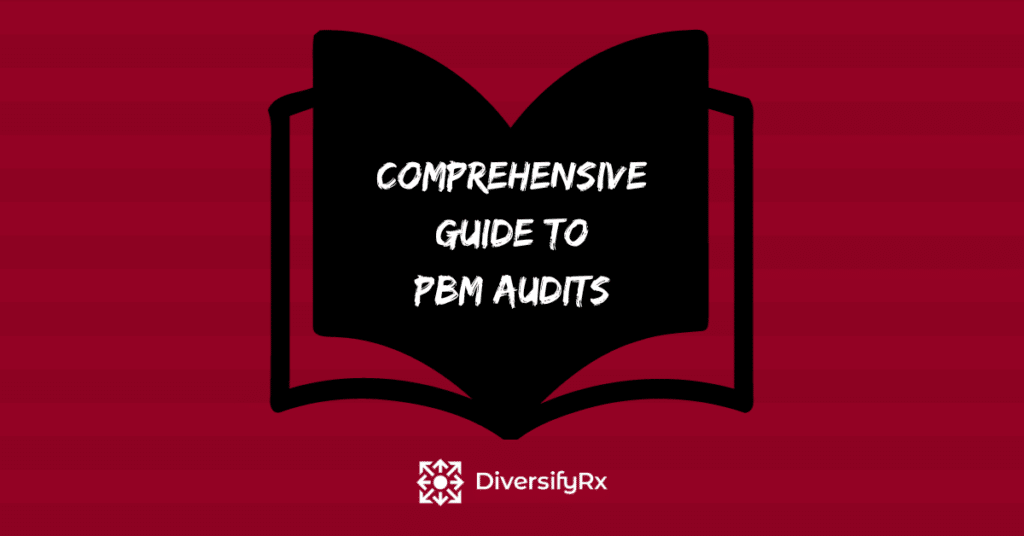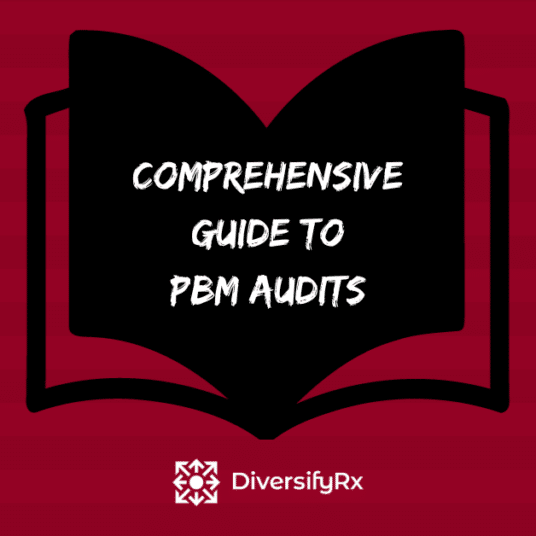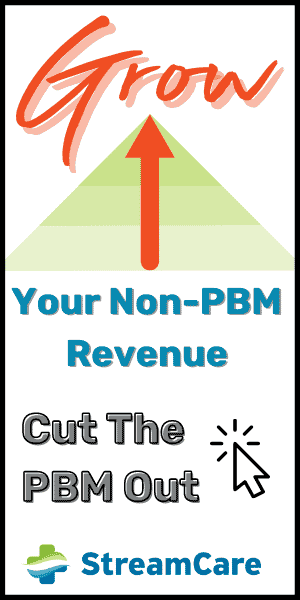Don’t let a PBM audit ruin your plans.
When your pharmacy relies on a Pharmacy Benefit Manager (PBM) for 90% or more of its revenues, it’s imperative to ensure 100% PBM billing compliance so you can pass any PBM audit.
Compliance with PBM billing regulations is more critical than ever, given the increasing number of audits conducted each year. PBMs frequently update their rules and interpretations, making it crucial for you to stay ahead of the game. Non-compliance can have dire consequences, potentially resulting in significant financial losses and the loss of contracting opportunities with PBMs.
Let’s explore the essentials of PBM billing compliance to help you navigate this complex PBM audit landscape.
Legal Rx:
Ensuring your pharmacy complies with PBM billing starts with the basics: making sure you’re filling legal prescriptions. If you receive a prescription for a controlled substance like Suboxone, you must have an X-DEA number. Additionally, the rules surrounding transferring prescriptions can vary by state. It’s essential to follow all legal requirements specific to your state.
Test Claims:
While there might be occasional requests to run test claims, doing large volumes of them can raise red flags with PBMs. Instead of test claims, consider conducting benefit checks. Benefit checks provide essential information about drug coverage without revealing reimbursement amounts, allowing you to work collaboratively with patients and prescribers to find suitable covered therapeutic options. For benefit checks, consider using a platform such as EZSCRIPTRx, which is fully compliant with all PBMs.
Unapproved Other Products:
The classification of “unapproved other products” is a complex issue. While some legacy drugs fall under this category and are perfectly fine to dispense, newer products may require caution. It’s worth noting that certain product combinations, such as “packs” that pair low-cost items with prescription or over-the-counter products, can lead to excessively high reimbursements. From a compliance standpoint, it’s wise to avoid dispensing such products, even if they are legally on the market.
Supplements & 510k Devices:
Understanding FDA classifications is crucial for PBM billing compliance. These classifications include drugs, supplements, and 510k devices. While drugs are what we typically think of, supplements and 510k devices have their own unique requirements and considerations. Just because a product looks like a drug and acts like a drug does not mean it is a drug. Ensuring compliance depends on understanding these classifications and adhering to PBMs’ specific rules.
Coupon Usage:
PBMs may have different rules based on FDA classifications, especially when it comes to using coupons. It’s important to note that most PBMs generally accept coupons from manufacturers. Caremark accepts online coupons for FDA-approved drugs only. For other products, like supplements, unapproved other items, or 510k devices, coupons can’t be used to offset copays for any plan serviced by Caremark.
Aberrant List:
Caremark, in particular, maintains an aberrant list, which restricts the dispensing of certain NDCs to no more than 25% of total Caremark billings in a 30-day rolling period. This limitation is unique to Caremark, so it’s essential to understand and adhere to it. While some products on the list are amazing products and beneficial for patients, others may be best avoided (like the kits). Just because a product is on the aberrant list does not mean you shouldn’t dispense it. There is nothing wrong with the product. The ones on the list are typically higher-profiting products, so limit yourself and remain compliant.
Cash Prices:
When dealing with cash prices, it’s important to differentiate between your pharmacy’s usual and customary price (U&C) and what PBMs pay. While I completely disagree with the U&C provision in PBM contracts, it is easy to remain compliant and offer great cash prices to your patients. To optimize cash prices and billing compliance, consider offering discounted cash prices for less common quantities (say #100 pills), using specific NDCs for cash pricing, and implementing in-house discount card programs like AxeRx (email Al from AxeRx).
Faxes:
Despite technological advancements, faxes remain a common means of communication in healthcare. When recommending any specific prescription products to prescribers, ensure you separate clinical justification from prescription recommendations. This practice helps avoid potential issues with PBMs, who may view certain recommendation activities as solicitations of prescriptions. Efficient pharmacy management systems that facilitate clinical notes and electronic two-way communication can streamline this process.
Pre-Printed Rx Pads:
Pre-printed Rx pads can be a valuable resource for prescribers. However, their usage can affect PBM billing compliance. The legality of these pads can vary by state, with some states allowing their use freely and some with limitations. In cases where they are not a legal prescription, consider converting them to e-prescriptions or verbally communicating the prescription details to the prescriber.
Invoices:
Invoice audits have become common in the PBM billing landscape. PBMs may request to see all invoices for a specific period to verify the use of valid wholesalers. It’s crucial to maintain a list of all your product sources and ensure they are all in compliance with PBM requirements. Regular physical inventory counts can also help you stay prepared for invoice audits.
Don’t Go Overboard:
While optimizing patient therapies for cost and effectiveness is essential, it’s important not to put all your eggs in one basket. Diversify your prescribers, payers, and product recommendations to mitigate risk and ensure sustainable success. When you do find winning prescriptions, don’t go crazy. Even though your patients could benefit, it is important to not do too many.
You Got A PBM Audit:
In the event of an audit, it’s essential to have a reliable resource to guide you through the process. Consider enlisting the help of experts like Pharmacy Compliance and Consulting or Pharmacy Lawyer Hunter Jamerson, who specialize in handling active audits. Proactive measures, like audit self-assessment, are key to maintaining compliance.
Audit Yourself:
Auditing your practices is a proactive approach to staying on the right side of PBM audits. Use this article as a starting point to review your billing practices, identify areas for improvement, and ensure your pharmacy operates within the bounds of the rules.
Profit is a vital aspect of any business, but it should be earned through ethical means. PBM billing compliance ensures that you can maximize profits while staying within the boundaries of the game. If you have questions or need support in navigating the complex world of PBM billing, don’t hesitate to reach out to DiversifyRx at info@diversifyrx.com or join our private Facebook group for further insights and assistance.
With these PBM billing compliance essentials, you can help ensure your pharmacy passes any PBM audit with ease.


















